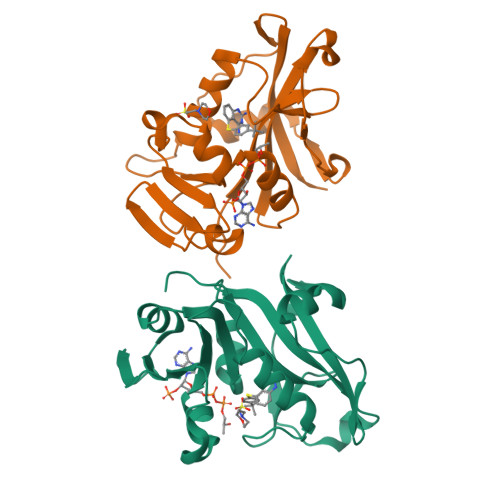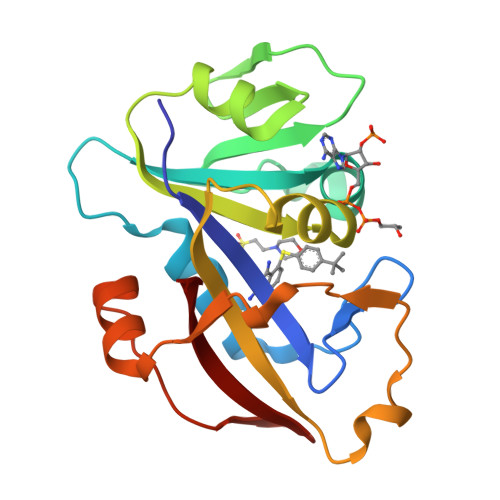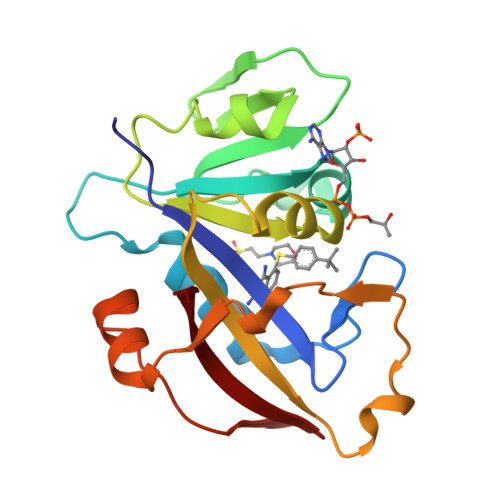X-ray Crystal Structures of Candida albicans Dihydrofolate Reductase: High Resolution Ternary Complexes in Which the Dihydronicotinamide Moiety of NADPH is Displaced by an inhibitor
Whitlow, M., Howard, A.J., Stewart, D., Hardman, K.D., Chan, J.H., Baccanari, D.P., Tansik, R.L., Hong, J.S., Kuyper, L.F.(2001) J Med Chem 44: 2928-2932
- PubMed: 11520201
- DOI: https://doi.org/10.1021/jm0101444
- Primary Citation of Related Structures:
1IA1, 1IA2, 1IA3, 1IA4 - PubMed Abstract:
X-ray crystallographic analysis of 5-(4'-substituted phenyl)sulfanyl-2,4-diaminoquinazoline inhibitors in ternary complex with Candida albicans dihydrofolate reductase (DHFR) and NADPH revealed two distinct modes of binding. The two compounds with small 4'-substituents (H and CH3) were found to bind with the phenyl group oriented in the plane of the quinazoline ring system and positioned adjacent to the C-helix. In contrast, the more selective inhibitors with larger 4'-substituents (tert-butyl and N-morpholino) were bound to the enzyme with the phenyl group perpendicular to the quinazoline ring and positioned in the region of the active site that typically binds the dihydronicotinamide moiety of NADPH. The cofactor appeared bound to DHFR but with the disordered dihydronicotinamide swung away from the protein surface and into solution. This unusual inhibitor binding mode may play an important role in the high DHFR selectivity of these compounds and also may provide new ideas for inhibitor design.
Organizational Affiliation:
GlaxoSmithKline, Inc., Five Moore Drive, Research Triangle Park, North Carolina 27709, USA.




















